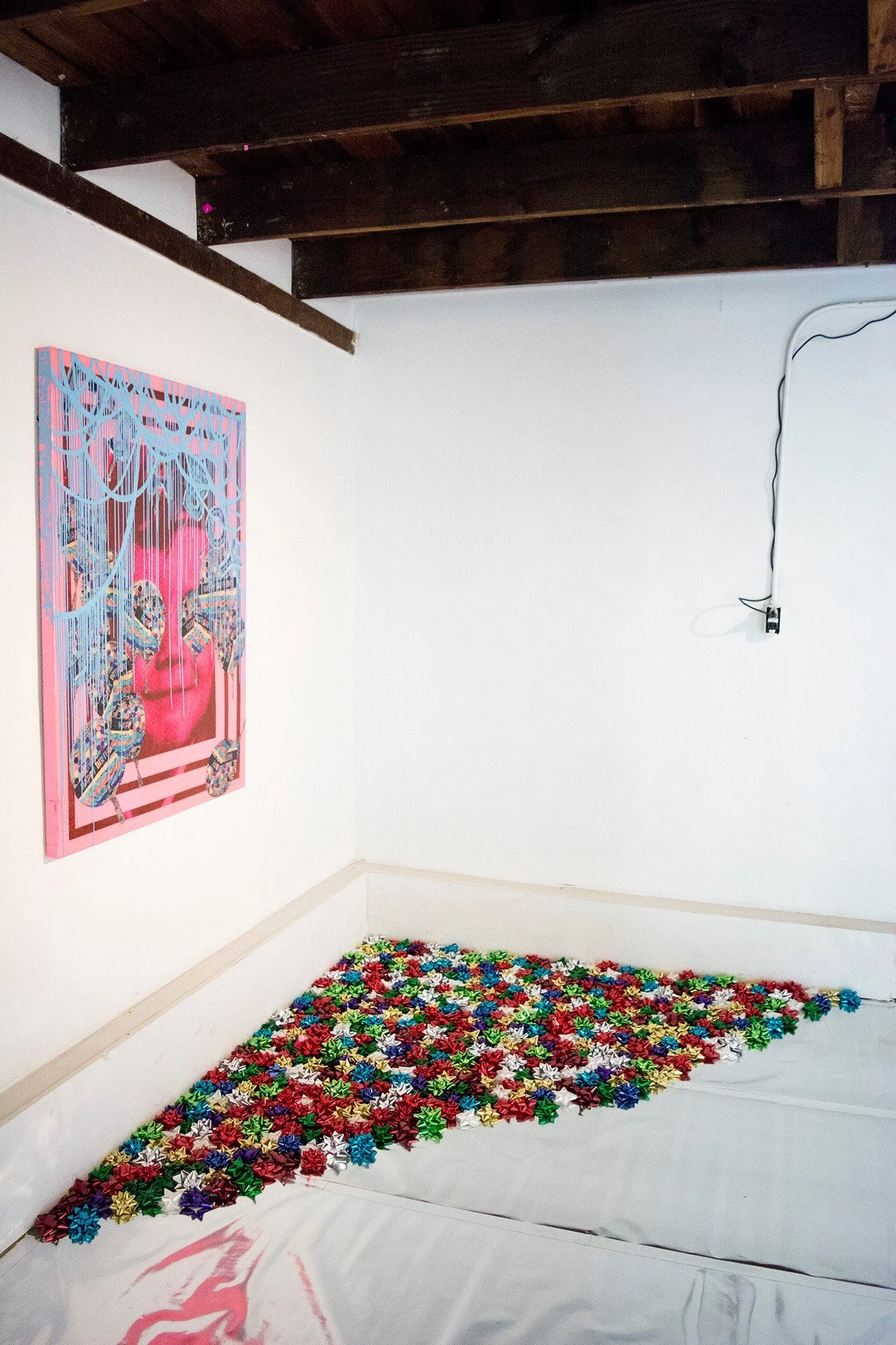Ashley Jonas: artist statement
I think about my new works as exploded paintings, like fireworks that do not fade. But rather than celebrating a single day or event, the works are dedicated to the longevity of building a life. These works are about the relationship between movable objects, the space those objects inhabit and my perception of the fantastic, peculiar connectivity embedded within that relationship.
I have been moving towards these larger works for about a year. Working in the studio back and forth between painting and sculpture, I believe I am ultimately asking myself if one these ways of working is more true to my search for beauty and wonder in the spaces we construct for ourselves. While painting allows me power to make decisions without limitations concerning classical physics, the object-based works let me improvise and respond to their elements. My objective in these new works is to confuse real and perceived space by cutting, painting and arranging materials to construct both three-dimensional and two-dimensional space.
It’s important, to me, to put these works in the context of my life’s timeline thus far. I have thought of myself as being forever transient, moving from one place to another…until moving to Dayton three years ago. Since then, I have planted and cared for a garden, spent enormous amounts of important time at home with my husband, and connected to a community. And so it is no wonder that the works are larger, more generous, gratuitous in color, with more harmony between thing and place.
___________________________
Ian Breidenbach: curator statement
For the last few years Ashley Jonas has been creating whimsical assemblages and still life paintings, culling together found objects and personal items from her collections. These still lifes are playfully abstract, colorful, surreal and intimate; portraits of her life as a collector of subtleties, lost objects and cast off baubles. These items are themselves portraits of the places Ashley has been; collected while bouncing between her father's utilitarian home on a beach in Key West, and her mother's lake house in Northern Michigan. They are items pulled from the ruins of Braddock, PA, from the trash in Syracuse, NY and Boulder, CO. They are souvenirs connecting her to the places she used to live. The items have a longevity, they don't die or decay, they don't just disappear, they require being thrown away.
Recently though, flowers have become another staple in these still lifes, all of which have been grown in her backyard in Dayton, OH, a place she has begun to think of as home. It is this introduction of the living that I find interesting. The flowers lack the permanence of the items. The flowers have a short lifespan, especially when cut. They wilt, they turn brown and fall away. They vary in their kind, and when asked how she chooses what type of flower will be in the work, she explains that she just uses whatever's growing. I don't feel like this is a dismissal, however. I believe that the flowers are just as important as the items, if not more. I believe them to be anchors to her current place, to her home, a connection she doesn't need to last forever, because she is still there. And whether she understands it or not, I believe the flowers to be a sign of staying put, of planting roots, of embracing the still life.
For Project 1612, Ashley Jonas and I will be working closely together to create an exhibition of her most recent work, which has seen her make the leap from representing her collection of objects in paint to creating three dimensional assemblages of the objects from the paintings. The end result in the space will be a life size still life painting as navigatable installation.
Artist Websites:
Ian Breidenbach
Ashley Jonas

















































































































































































































